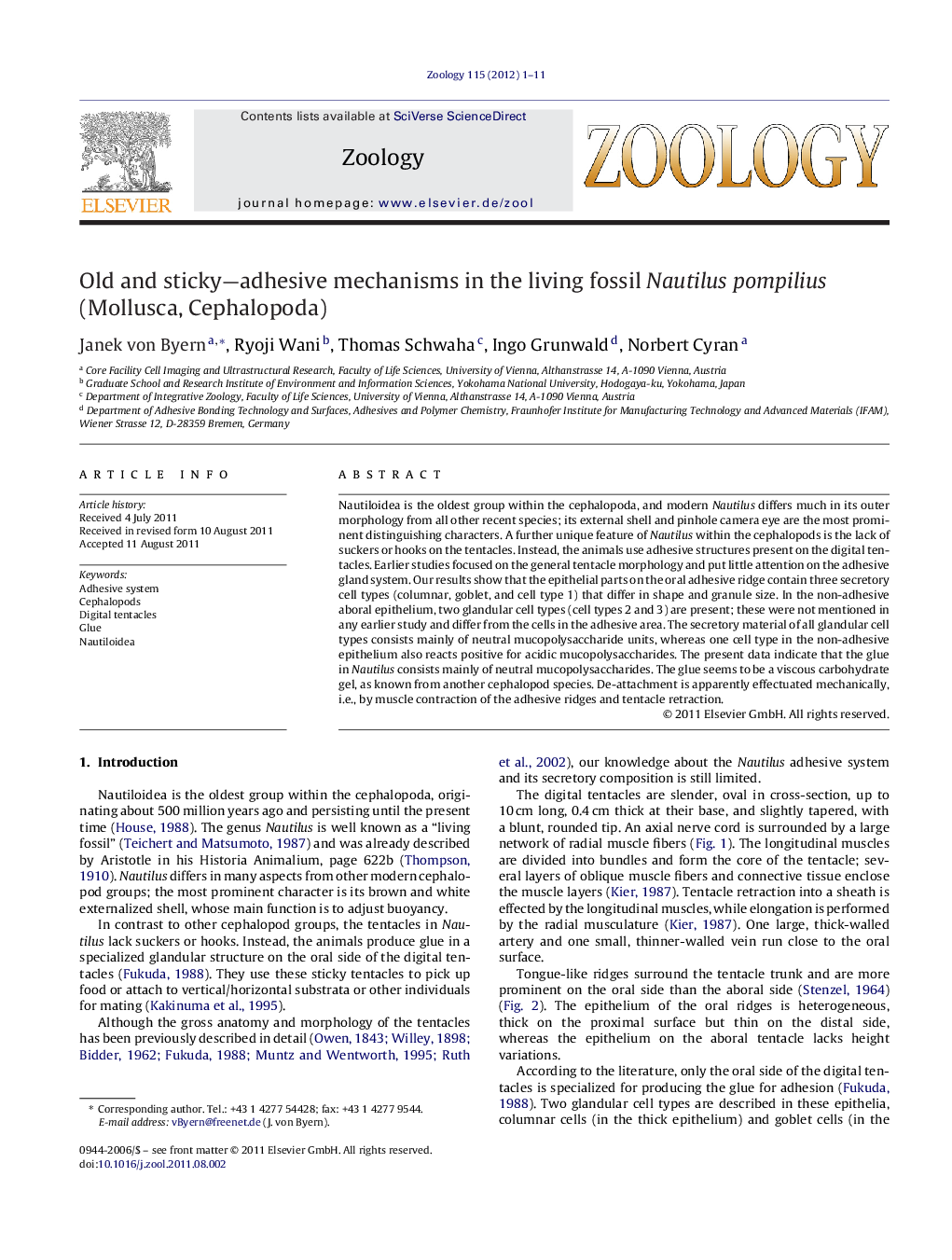| کد مقاله | کد نشریه | سال انتشار | مقاله انگلیسی | نسخه تمام متن |
|---|---|---|---|---|
| 5896458 | 1154855 | 2012 | 11 صفحه PDF | دانلود رایگان |
عنوان انگلیسی مقاله ISI
Old and sticky-adhesive mechanisms in the living fossil Nautilus pompilius (Mollusca, Cephalopoda)
دانلود مقاله + سفارش ترجمه
دانلود مقاله ISI انگلیسی
رایگان برای ایرانیان
موضوعات مرتبط
علوم زیستی و بیوفناوری
علوم کشاورزی و بیولوژیک
علوم دامی و جانورشناسی
پیش نمایش صفحه اول مقاله

چکیده انگلیسی
Nautiloidea is the oldest group within the cephalopoda, and modern Nautilus differs much in its outer morphology from all other recent species; its external shell and pinhole camera eye are the most prominent distinguishing characters. A further unique feature of Nautilus within the cephalopods is the lack of suckers or hooks on the tentacles. Instead, the animals use adhesive structures present on the digital tentacles. Earlier studies focused on the general tentacle morphology and put little attention on the adhesive gland system. Our results show that the epithelial parts on the oral adhesive ridge contain three secretory cell types (columnar, goblet, and cell type 1) that differ in shape and granule size. In the non-adhesive aboral epithelium, two glandular cell types (cell types 2 and 3) are present; these were not mentioned in any earlier study and differ from the cells in the adhesive area. The secretory material of all glandular cell types consists mainly of neutral mucopolysaccharide units, whereas one cell type in the non-adhesive epithelium also reacts positive for acidic mucopolysaccharides. The present data indicate that the glue in Nautilus consists mainly of neutral mucopolysaccharides. The glue seems to be a viscous carbohydrate gel, as known from another cephalopod species. De-attachment is apparently effectuated mechanically, i.e., by muscle contraction of the adhesive ridges and tentacle retraction.
ناشر
Database: Elsevier - ScienceDirect (ساینس دایرکت)
Journal: Zoology - Volume 115, Issue 1, February 2012, Pages 1-11
Journal: Zoology - Volume 115, Issue 1, February 2012, Pages 1-11
نویسندگان
Janek von Byern, Ryoji Wani, Thomas Schwaha, Ingo Grunwald, Norbert Cyran,